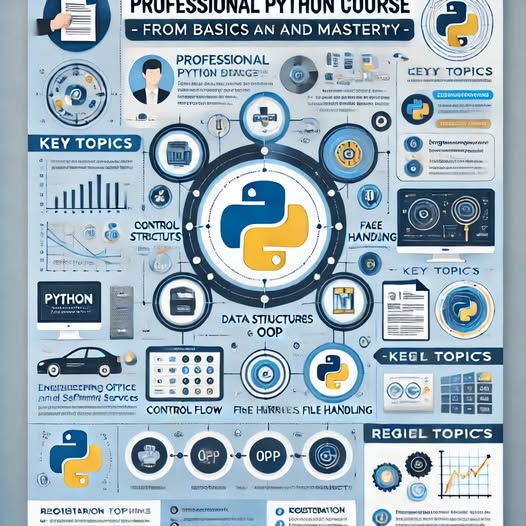📌 General Information: Python
Code: 1005-P
📝 What is Python?
Python is a high-level, interpreted, general-purpose programming language known for its simplicity and readability. It was created by Guido van Rossum and first released in 1991. Python supports multiple programming paradigms, including procedural, object-oriented, and functional programming.
🚀 Key Features of Python
🔹 Easy to Read & Write – Python’s syntax is simple and similar to English.
🔹 Interpreted Language – No need for compilation; Python runs directly.
🔹 Cross-Platform – Works on Windows, macOS, and Linux.
🔹 Extensive Libraries – Includes NumPy, Pandas, TensorFlow, OpenCV, etc.
🔹 Object-Oriented & Functional – Supports multiple coding styles.
🔹 Dynamically Typed – No need to declare variable types.
🔹 Large Community – Huge support and extensive documentation.
💡 Common Uses of Python
✔️ Web Development (Django, Flask)
✔️ Data Science & Machine Learning (Pandas, NumPy, TensorFlow, Scikit-learn)
✔️ Cybersecurity & Ethical Hacking (Scapy, PyShark)
✔️ Embedded Systems & IoT (MicroPython, Raspberry Pi)
✔️ Automation & Scripting (Web scraping, task automation)
✔️ Game Development (Pygame)
✔️ Networking & Cloud Computing (AWS SDK, Paramiko)
📌 Python Versions
-
Python 2.x (Legacy, discontinued in 2020)
-
Python 3.x (Current, recommended for all new projects)
📌 Latest Version: Check the official Python website for updates.
💻 Python Syntax Example
# Simple Python program
print("Hello, Python!")
# Variables and Data Types
name = “Adel”
age = 25
print(f”My name is {name} and I am {age} years old.”)
# Loop
for i in range(5):
print(i)
# Function
def greet(name):
return f”Hello, {name}!”
print(greet(“Bob”))
🌍 Getting Started with Python
1️⃣ Download & Install Python from python.org.
2️⃣ Use IDEs like PyCharm, VS Code, Jupyter Notebook, or IDLE.
3️⃣ Learn Python Basics from platforms like W3Schools, Real Python, or Coursera.
4️⃣ Practice coding on sites like LeetCode, HackerRank, or CodeWars.
📌 Python is one of the most versatile languages—perfect for beginners and experts alike! 🚀




